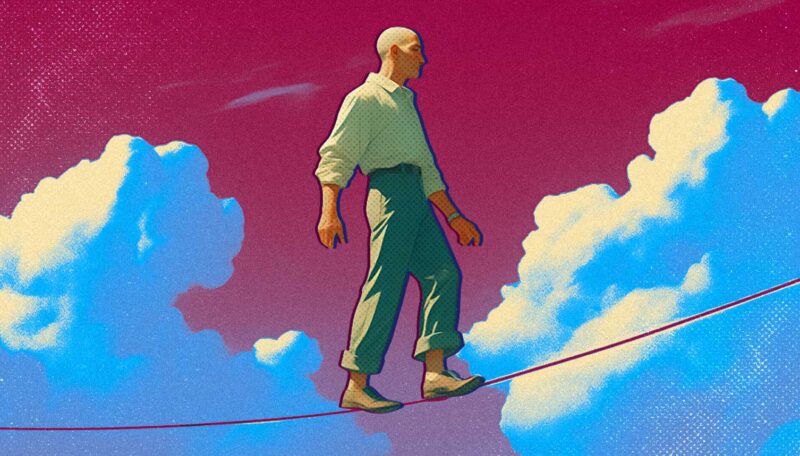Editorial
What We Get Wrong About Homelessness: The Urban vs. Rural Divide
When most people picture homelessness, they imagine tents under an overpass, cardboard signs, and city skylines in the background. This image neatly fits the idea that homelessness is an “urban problem.” But that idea is increasingly wrong.
Homelessness is quietly spreading across rural America—in farming towns, oil patch counties, and small communities hours from the nearest shelter—and it’s getting worse fast. A 2023 YouGov survey found that 67% of Americans say homelessness is a very serious problem in the United States, up from 54% the previous year. If Americans keep treating homelessness like something that only happens in big blue cities, we will keep designing solutions that miss people who need help.
The Scale of the Problem
On a single night in January 2024, about 771,480 people were experiencing homelessness in the United States, which is the highest number since the federal government began tracking it in 2007, and an 18% increase from the year before.
That picture includes a lot of rural America. More than 126,000 people experiencing homelessness were counted in rural regions—that’s about 16% of the national total.
The trendlines are alarming. In largely rural regions, unsheltered family homelessness (parents and kids with nowhere to go) rose 36% in the most recent count.
In other words: if your mental image of homelessness is mostly single adults in urban encampments, you’re missing a huge and growing part of the crisis.
What’s Driving the Crisis
A big part of the problem is the housing itself. Rural housing tends to be older and cheaper, but also more fragile. Once a trailer, duplex, or small rental becomes unlivable because of mold, plumbing issues, or storm damage, there’s often nowhere else to go. When a property is condemned or sold, it’s usually gone for good. And there’s no pipeline of affordable housing to replace it.
Then there’s the weather. Rural areas get hit hard by floods, freezes, wildfires, and storms that can wipe out entire neighborhoods overnight. And when you lose a trailer in a rural floodplain, you don’t just lose shelter. You lose the only affordable home within 50 miles.
Finally, there’s the economy. In a city, when one business shuts down, people can often find another job across town. But in many small towns, the entire population relies on one factory, coal mine, or oilfield for income. A single factory closure can fling dozens of families into crisis at once.
Why Rural Homelessness Stays Invisible
Rural homelessness isn’t characterized by sprawling tent cities or crowded downtown sidewalks. You see families sleeping in their cars behind gas stations, people doubling up with relatives in unsafe or overcrowded homes, or individuals living in makeshift structures on private land or deep in the woods.
And rural homelessness rarely makes the front page. By portraying homelessness almost exclusively through images of tent cities and urban streets, the media reinforces the false idea that it’s only a big-city problem.
The sheer geography and lack of services in rural populations exacerbate the issue further. In cities, people experiencing homelessness might have multiple shelters, outreach teams, and public transportation options. In many rural counties, the nearest emergency shelter can be an hour away, with no bus or train to get there.
And the face of homelessness outside big cities is different, too. In rural areas, it’s more likely to be families, first-time homelessness, and people who are working but still can’t afford housing. These aren’t long-term street populations. They’re people whose lives fell apart because of one layoff, one broken car, or one tragic storm. Programs built for chronic urban homelessness—like permanent supportive housing or large-scale encampment cleanups—don’t match what rural families actually need, like short-term rent help, emergency home repairs, or childcare so they can hold a job.
Why Acknowledging the Divide Matters
The federal government distributes homelessness funding through formulas that rely on “Point-in-Time” counts. But due to rural homelessness’s invisibility, it is often undercounted. That means rural communities get fewer beds, fewer outreach workers, and less rental assistance—even as their needs grow.
And when political leaders frame homelessness as something that only happens in “blue cities,” it turns housing policy into a culture war instead of a shared problem. Acknowledging rural homelessness doesn’t just make the data more accurate—it rebuilds credibility. It reframes the issue as infrastructure, disaster resilience, healthcare, and workforce stability, not just “cleaning up encampments.”
If we can see homelessness as the national crisis it truly is, we can design smarter, place-based solutions. In rural areas, that might mean mobile outreach instead of walk-up services, home repair programs to keep housing habitable, or gas cards and car repair assistance instead of bus passes. It means thinking in terms of what’s possible locally, not a one-size-fits-all template.
The Bigger Picture
The data is clear: homelessness is not just an urban issue. It’s a rural, suburban, and urban crisis all at once. We can keep arguing about tent bans in downtown areas, but that is only a small snapshot of the issue. Expanding how we see this issue helps us move forward and find better solutions.
The first honest step is simple: stop pretending this is someone else’s problem.
And as we do, it’s worth asking ourselves a few uncomfortable but necessary questions:
- What assumptions do we make about homelessness that blind us to its rural face?
- How can city programs and rural programs learn from each other?
- How can policy account for the real differences between rural and urban homelessness instead of forcing one model to fit all?
- And why might solutions that work in cities fail in rural areas?
Homelessness doesn’t look the same everywhere, but it’s happening everywhere. And until we start seeing the full picture, we’ll keep missing the people in the corners of it.
—Alex Buscemi (abuscemi@buildersmovement.org)
Image by Matthew Lewis
Keep Reading

Is Healthcare a Right or a Privilege? How the Healthcare Debate Misses the Point

How Do We Find the Balance Between Accountability and Grace?
